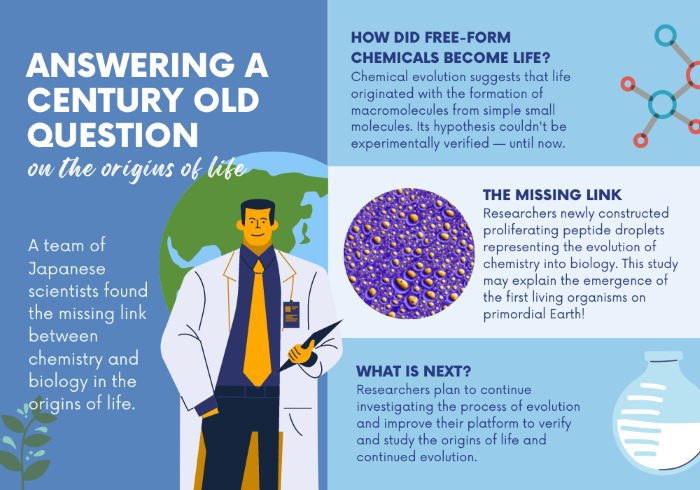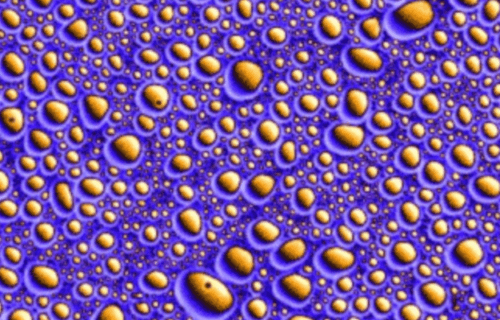HIROSHIMA, Japan — For many years, scientists have studied the biological evolutionary theory. Genetic sequencing and the geologic column have enabled biologists to produce the phylogenetic tree, spanning from the most complex organisms all the way down to the simplest, single-celled lifeform that gave rise to all living things. But the question is, how did the first living organism come to be? This gap between chemical evolution and the beginning of biological evolution may be a little smaller according to recent findings.
Two Japanese scientists created a microscopic particle capable of replicating itself. Known as a “coacervate droplet,” it depicts the transition from chemistry to life.
“Chemical evolution was first proposed in the 1920s as the idea that life first originated with the formation of macromolecules from simple small molecules, and those macromolecules formed molecular assemblies that could proliferate,” says the study’s first author, Muneyuki Matsuo, an assistant professor of chemistry in the Graduate School of Integrated Sciences for Life at Hiroshima University, in a statement.
“Since then, many studies have been conducted to verify the RNA world hypothesis — where only self-replicating genetic material existed prior to the evolution of DNA and proteins — experimentally,” Matsuo continues. “However, the origin of molecular assemblies that proliferate from small molecules has remained a mystery for about a hundred years since the advent of the chemical evolution scenario. It has been the missing link between chemistry and biology in the origin of life.”
Kensuke Kurihara works at Kyocera Corporation and is one of Matsuo’s first collaborators. The two were looking for an explanation for how the primitive molecules became living organisms. Researchers first believed the environment caused this change. Components were produced under extreme pressure and heat, then became molecules essential to life after temperatures dropped and livable conditions were established. Still, the problem was with explaining reproduction. “Proliferation requires spontaneous polymer production and self-assembly under the same conditions,” said Matsuo.

Matsuo and Kurihara created a non-living building block capable of replicating itself using amino acids (the basic components of proteins) which acted as the progenitor. The researchers then applied water (at normal temperature) to the molecules, which then joined together and formed proteins under standard pressure. The proteins then became globules on their own, expanding and replicating as additional amino acids were given.
The scientists say the globules were capable of gathering nucleic acids (DNA and RNA) which enabled them to withstand certain environmental stressors. In other words, not only could these globules proliferate, they could combine with other components of living cells, which actually improves their survivability!
“A droplet-based protocell could have served as a link between ‘chemistry’ and ‘biology’ during the origins of life,” says Matsuo. “This study may serve to explain the emergence of the first living organisms on primordial Earth.”
The team’s goal is to broaden their foundation for testing and analyzing the origins of living organisms and the future trajectory of human development. They hope this will help them better comprehend how chemicals transform into life’s building blocks.
“By constructing peptide droplets that proliferate with feeding on novel amino acid derivatives, we have experimentally elucidated the long-standing mystery of how prebiotic ancestors were able to proliferate and survive by selectively concentrating prebiotic chemicals,” says Matsuo. “Rather than an RNA world, we found that ‘droplet world’ may be a more accurate description, as our results suggest that droplets became evolvable molecular aggregates — one of which became our common ancestor.”
This study is published in Nature Communications.
